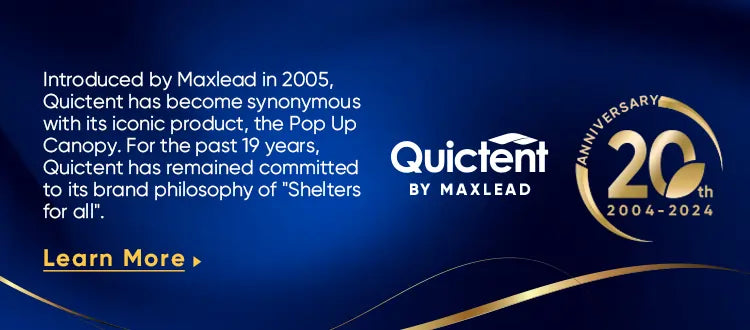A greenhouse building in California may be different from a greenhouse in Texas. Because the climate characteristics are different in the two areas. One greenhouse design does not fit all regions and you will need to make adjustments based on local climate characteristics.

(greenhouse type)
Where are you located? What type of greenhouse do you plan to choose?
Climate type and greenhouse design
Temperate climate
Temperate climates are distinguished by seasonal temperature variations and moderate precipitation throughout the year. Most hydroponic sites and plant science research sites are located in temperate climates.
In these areas, you usually do not feel extreme heat or cold. Compared with other regions, temperate regions have moderate temperatures throughout the year, which are suitable for growing all kinds of plants. To achieve high year-round production and ensure crop quality, you should choose a greenhouse with fully covered walls, roof, and sides.
 (Temperate climate)
(Temperate climate)
If conditions allow, try to consider a greenhouse with a larger interior space. In the fall and winter, you will need additional heating, ventilation, irrigation, and lighting to simulate the ideal growing conditions inside the greenhouse.
If space is limited, mini greenhouses and walk-in greenhouses are also available as greenhouse options for temperate regions. In spring and summer, you can put the greenhouse outside to grow some low-growing plants.
In fall and winter, you need to move the greenhouse kit indoors. Although winters are warmer in temperate climates than in other regions, there is still a risk of stagnant growth or wilting of plants.
Mediterranean climate
In Mediterranean climates, summer temperatures are high but precipitation is low, and winter temperatures are lower than elsewhere. If you wish to grow plants in such areas, you need to choose drought-tolerant and hardy plants. For gardeners in these regions who love hydroponic plants, heat and drought are no small challenge. In such areas, they need a greenhouse structure that can be heated but can stay cool in the summer.
An ideal greenhouse design is a polyethylene greenhouse with multiple vents and heating units or a high-grade aluminum greenhouse. In summer, gardeners can install fan systems within the greenhouse structure. Fans can cool the air and increase humidity. Vents are also essential, preferably with multiple vents on each side of the greenhouse.
The Quictent 20'x10'x7' large greenhouse has multiple vents on both sides and you can roll up the zipper doors to observe the plants.
- Size: 10'x20'
- Height:6.6'
- Benefits: Reinforced Top Structure, Versatile Windows, Two Doors in One
In winter, the external environment temperature is low, and for the plant to grow well, the gardener needs to add a heating system.
In Mediterranean climates, a 20'x10'x7' greenhouse is a suitable size. A greenhouse of this size is not too large, but it is suitable for a variety of backyard spaces. Moreover, the interior space is enough for you to install various equipment.
Tropical Humid Climates
The tropics are hot for most of the year and often have heavy rains. In these areas, humidity can be very high.
Greenhouse gardeners in tropical regions need to be concerned about plant pests and diseases that may result from humidity. If setting up a greenhouse in such a region, a wooden greenhouse should be the first option to rule out. Wooden greenhouses are costly, and in humid areas, wood is more susceptible to rot and pest damage.

(Tropical Humid Climates)
For greenhouse address selection, areas where temperatures are typically cooler and humidity levels are lower should be preferred.
A good tropical greenhouse can have a domed top so that rainwater can stay with the structure and not accumulate on the top.
The Quictent 25' x 10' x 6.6' Upgraded Large Walk-in Greenhouse structure is domed so that rainwater and dust can slide down the structure.
To prevent rainwater from penetrating the greenhouse, this greenhouse features fully sealed windows and doors. The greenhouse windows are Velcroed and the doors can be locked to ensure a tight seal.
- Size: 10'x25'
- Height:6.6'
- Benefits: Extra 5 Groups of Top Hoops Equipped, 2 Independent Lockable Swing Doors
To reduce the impact of heavy rain on the top of the greenhouse, the top cover is reinforced with Oxford cloth. Moreover, in addition to 3 rows of top crossbars, additional 5 sets of top hoops make the whole structure stronger.
Typhoons and hurricanes are the biggest challenges a tropical greenhouse can face. Therefore, the greenhouse should be reinforced and regularly inspected during normal times. After a typhoon or hurricane, the greenhouse should be inspected for damage in time.
Tropical Desert Climate
Desert areas are considered to be the most unsuitable areas for growing plants. In a desert environment, temperatures can be very high and moisture can be exceptionally low, making it impossible for most plants to survive.
In addition to high temperatures, strong winds carrying dust or sand are the main threat to plants. When setting up a greenhouse in such areas, the focus is on structural stability and plant selection. Only drought-tolerant plants can survive in desert areas, such as cacti and succulents.
 (Tropical Desert Climate)
(Tropical Desert Climate)
Regarding greenhouses, you should first choose a sturdy greenhouse frame. When setting up a greenhouse, anchor the greenhouse foundation deep into the ground. Then set up the frame and reinforce it. These greenhouses will always face the threat of strong winds and dust.
Glass greenhouses, wooden greenhouses, and other ornamental greenhouses are not suitable for the desert climate. Sturdy aluminum greenhouses and steel greenhouses are better choices.
Cold Climate
In higher latitudes, it is cold most of the year. Greenhouses are the perfect shelter for plants that are exposed to cold temperatures all year round.
Cold-frame greenhouses are common in cold climate regions, such as polycarbonate cold frames. You can also choose from heavy-duty aluminum framed greenhouses or heavy-duty polyethylene greenhouses.
 (cold frame greenhouse)
(cold frame greenhouse)
Wooden greenhouses are not recommended because the wood will deteriorate more quickly in cold weather.
A domed roof or triangular roof is preferable for the top of the greenhouse.
Conclusion
The climatic characteristics of your region will influence your greenhouse choice. The right greenhouse can save you a lot of time and money in your gardening life. Don't choose a greenhouse structure that can't adapt to the climate or your greenhouse may be destroyed in a short time.









